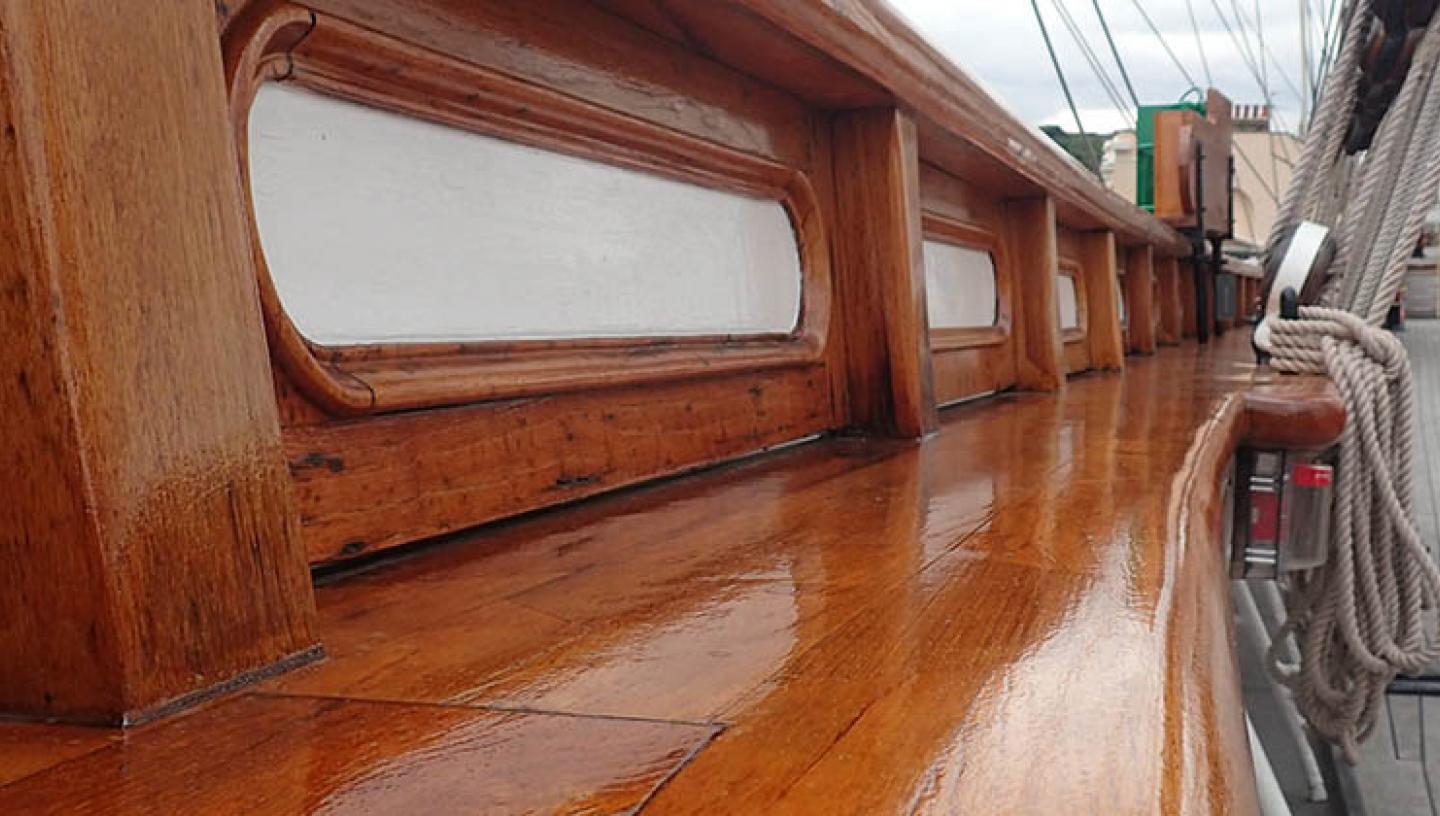
18 Sep 2017
Every month, Documentations Officer Claire Denham takes us behind the scenes at Cutty Sark to give us an insight into the important daily research, documentation and maintenance work that keeps the ship preserved for many future generations to come.
by Claire Denham, Documentations Officer
The last elements that the ship keepers have to contend with this month is the wooden bulwarks above the iron work. They consist of the main rail, main rail panelling and the topgallant rail capping off the top. The main rail which sits on top of the iron bulwark encloses the chain plates and also secures the belaying pins and rigging. Originally the main rail was made from teak as mentioned in the original specification:
No. 23 Main Rail. To be Teak 4” x 12” to have large pin rail in wake of rigging to be in line with break of poop.
Next on top of the main rail is the main rail panelling. This is sandwiched between the main rail and the topgallant rail, fixed to teak stanchion posts. The panelling starts at the break of the raised anchor deck and continues up to the turn of the counter, where it becomes solid teak. Specification states: Bulwark to be panelled inside in ornamental teak work.
Finally the topgallant rail also made from teak. The rail sits on the top line of the bulwarks, spanning from the Knightheads at the bow following around the full perimeter of the ship.
This area of the ship has been subject to much repair over the years. With the rails on display around the whole of the ship it was seen as essential to keep ships like the Cutty Sark in tip top condition as a matter of pride. Unfortunately the ship had fallen into neglect by 1913. Under the name Ferreira, little money was available for her upkeep. Whilst she was in America, a ship’s officer inspecting her at New Orleans quay side commented on the rail:
‘It would have made any old deep water mate grind his teeth to see a desecration of the time-honoured methods of preserving the bright-works.’
In 1916 she was caught in a storm off the coast of South Africa, her mainmast was ordered to be cut away, the top mast was washed overboard, leaving the lower iron mast bent over to port destroying her bulwarks, smashing the topgallant rail.
During the ships 1950’s restoration, little detail is given to repairs except that the teak rail, topgallant rail and teak panelling inside the topgallant bulwarks had also to be extensively renewed in teak and pine. Pine was used in other areas of the ship due to cost.
From her time in Greenwich repairs and varnishing have continued on a regular basis. Today our ship keepers are currently sanding down and preparing to oil the rails. Around 7 to 8 coats are applied depending on the needs of the wood, culminating in a beautifully finished, irresistible to touch pin rail. With care in the preparation and application of the oil, Cutty Sark will carry on the clipper ship's time-honoured tradition of preserving the bright-works.